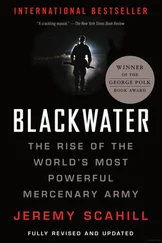When the jihadists returned to their home country, Saleh gave them safe haven. “Because we have political pluralism in Yemen, we decided not to have a confrontation with these movements,” said Saleh. Islamic Jihad, the movement of Ayman al Zawahiri, the Egyptian physician who rose to become bin Laden’s number-two man, based one of its largest cells in Yemen in the 1990s. Saleh clearly did not see al Qaeda as a major threat. If anything, he saw the jihadists as convenient sometime allies who could be used for his own domestic agenda. In return for allowing them to move freely and train in Yemen, Saleh could use jihadists who fought in Afghanistan in his battle against southern secessionists and, later, against Shiite Houthi rebels in the north. “They were the thugs that Saleh used to control any problematic elements. We have so many instances where Saleh was using these guys from al Qaeda to eliminate opponents of the regime,” Ali Soufan, the former senior FBI agent who worked extensively in Yemen, told me. Because of their value to Saleh’s domestic agenda, “they were able to operate freely. They were able to obtain and travel on Yemeni documents. Saleh was their safest base. He tried to make himself a player by playing this card.”
The consequence of this relationship was that as al Qaeda expanded during the 1990s, Yemen provided fertile ground for training camps and recruitment of jihadists. During the Clinton administration, this arrangement barely registered a blip on the US counterterrorism radar outside of a small group of officials, mostly from the FBI and CIA, who were tracking the rise of al Qaeda.
That would change on October 12, 2000, following a massive David versus Goliath attack on a billion-dollar US warship, the USS Cole, which had docked in the port of Aden to refuel. Shortly after 11:00 a.m., a small motorboat packed with five hundred pounds of explosives sped up to the ship and blasted a massive forty-by-forty-foot hole in the Cole ’s side. The attack killed seventeen US sailors and wounded more than thirty others. “In Aden, they charged and destroyed a destroyer that fearsome people fear, one that evokes horror when it docks and when it sails,” bin Laden later said in an al Qaeda recruitment video, reciting a poem one of his aides had written. The successful attack, according to al Qaeda experts, inspired droves of new recruits—particularly from Yemen—to sign up with al Qaeda and similar groups.
The FBI agents who traveled to Yemen in the aftermath of the attack were heavily monitored by Yemeni authorities and were greeted at the airport by Yemeni special forces pointing weapons at them. “Yemen is a country of 18 million citizens and 50 million machine guns,” reported John O’Neill, the lead FBI investigator of the Cole bombing. He later said, “This might be the most hostile environment the FBI has ever operated in.” In the summer of 2001, the FBI had to pull out completely after a series of threats against its agents and an alleged plot to blow up the US Embassy. “We regularly faced death threats, smokescreens and bureaucratic obstructions,” recalled Soufan, who was one of the FBI’s lead investigators. Saleh’s government generally obstructed the US investigation into the bombing, but he was hardly the only source of frustration for the investigators. “No one in the Clinton White House seemed to care about the case,” recalled Soufan. “We had hoped that the George W. Bush administration would be better, but except for Robert Mueller, the director of the F.B.I., its top officials soon sidelined the case; they considered it, according to Paul Wolfowitz, the deputy defense secretary, ‘stale.’”
Soufan and a handful of US counterterrorism officials watched as the Cole bombing strengthened bin Laden’s position. “The Strike on the Cole had been a great victory,” observed Lawrence Wright in his definitive book on al Qaeda, The Looming Tower. “Al-Qaeda camps in Afghanistan filled with new recruits, and contributors from the Gulf states arrived carrying Samsonite suitcases filled with petrodollars, as in the glory days of the Afghan jihad.” A week before 9/11, Saleh had boasted on Al Jazeera that his government had not allowed the FBI to interrogate or question any senior Yemeni officials about the attack. “We denied them access to Yemen with forces, planes and ships,” declared Saleh. “We put them under direct monitoring by our security forces. They respected our position and surrendered to what we did.”
The terrorist attacks on the World Trade Center on September 11, 2001, posed a new challenge to the relationship between Saleh’s regime and the United States. Although he had been in power since the late 1970s, in the aftermath of 9/11, Saleh’s world could have easily crumbled in an instant. “Those who make war against the United States have chosen their own destruction,” President Bush declared four days after 9/11. “Victory against terrorism will not take place in a single battle, but in a series of decisive actions against terrorist organizations and those who harbor and support them.” The “harbor” part was taken as an ominous warning by Saleh—and rightly so.
The presidential findings and other directives issued by Bush after 9/11 had authorized the CIA and US Special Operations Forces to fight al Qaeda across the globe wherever its operatives were based. As US forces pushed into Afghanistan, Special Operations Forces and the CIA continued to track the movements of al Qaeda operatives with the aim of targeting them for kill or capture wherever they landed. After the United States swiftly overthrew the Taliban government in Kabul, many of the foreign fighters affiliated with bin Laden found themselves on the run and seeking refuge. One of the key safe havens they found was in the wilds of Yemen.
The Bush administration put Yemen on a list of potential early targets in the war on terror and could have swiftly dismantled Saleh’s government, despite Saleh’s cocky pre-9/11 declaration that “Yemen is a graveyard for the invaders.” Saleh was determined not to go the way of the Taliban, and he wasted little time in making moves to ensure he wouldn’t.
The first was to board a plane to the United States.
In November 2001, President Saleh arrived in Washington, DC, where he held talks with President Bush and Vice President Cheney, as well as FBI director Robert Mueller and CIA director George Tenet. He told anyone who would listen that Yemen was on the side of the United States. The media were brought into the White House for a photo session of the two leaders smiling and shaking hands. In his meetings with Bush, Saleh emphasized Yemen’s “condemnation of the September 11 terrorist attacks on the U.S. and Yemen’s denunciation of all forms of terrorism” and referred to his country as “a principal partner in the coalition against terrorism.”
While the Saleh show played out in public, with the Bush administration portraying Saleh as an ally in the newly branded “Global War on Terror,” behind closed doors senior US officials were brokering agreements with Saleh to expand the US footprint in Yemen. During his meetings in Washington, which included visits at his personal suite at the Ritz Carlton Hotel on Twenty-second Street by Mueller and Tenet, Saleh was presented with an aid package worth up to $400 million, in addition to funding from the World Bank and International Monetary Fund. Crucially for the United States, it would also include expanding the training of Yemen’s special forces. It was this training that would permit US Special Forces to deploy inside Yemen while allowing Saleh to save face domestically. As part of Saleh’s deal with the Bush administration, the United States set up a “counterterrorism camp” in Yemen run by the CIA, US Marines and American Special Forces that would be backed up by the US outpost in the nearby African nation of Djibouti, which also housed Predator drones. Tenet also arranged for the United States to provide Yemen with helicopters and eavesdropping equipment. Crucially, Saleh also gave Tenet permission for the CIA to fly drones over his territory.
Читать дальше












